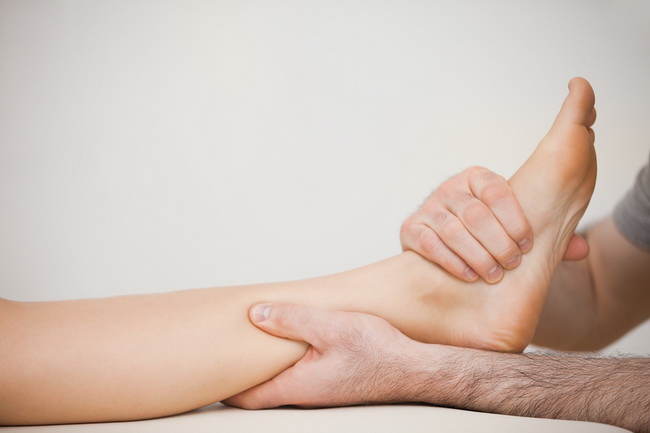- Make It Yourself Lavender Heart-Shaped Bath Bombs!
- 20 Things You Never Knew About “Down There”
- 12 Best Foods For Those Suffering From Arthritis Pain
- 12 Personal Hygiene Mistakes Almost Everyone Makes (Mom Never Told You About #4!)
- 15 Medicinal Plants And Herbs From The Cherokee People
- 12 Mind-Blowing Benefits Of Drinking Coconut Water During Pregnancy
- 12 Outstanding Winter Foods That Won’t Fatten You Up Like A Christmas Turkey
This One Weird Trick Will Get Rid Of Those Annoying Nighttime Leg Cramps!

Photo credit: bigstock.com
However, since leg cramps can be unpredictable, you might want to check out a few other things that are believed to cause leg cramps:
1. Low Potassium Levels
Doctors believe that low levels of potassium can be the underlying cause of nighttime leg cramps. You can try a high potassium tonic of 2 teaspoons of apple cider vinegar, mixed with 1 teaspoon of honey inside one glass of water. Drink this each night about an hour before bed.
If this seems to work for you, then you can try to improve your potassium levels by eating more potassium rich foods such as avocados, apples, bananas, yogurt, spinach, cantaloupe, baked potatoes, mushrooms, tomatoes, and dried fruit.
2. Low Magnesium Levels
Many people have stated that once they began to increase their intake of magnesium, legs cramps quickly became a thing of the past. You can use magnesium lotions and oils to put on your legs and feet at bedtime, as well as increase your intake of magnesium rich foods such as nuts, pumpkin seeds, bananas, wheat germ, seafood, spinach, baked potatoes, and molasses. Find out more warning signs of magnesium deficiency.
Taking a bath three or four times a week with about 2 cups of Epsom salts added to your bath is another great way to get your magnesium on. Magnesium is difficult for your body to absorb through your digestive system, so getting enough of this vital mineral through your skin is an easy way to get the job done.
SEE ALSO: Make Your Own Leg and Foot Anti-Cramp Salve
3. Low Calcium Levels
Like potassium and magnesium, many doctors believe that a low calcium level is what causes these painful nighttime episodes. Eat more calcium rich foods such as milk, cheese, yogurt, turnip greens, salmon, green beans, and sardines (don’t forget to eat those bones!)
If you still get an occasional cramp, it’s good to have a technique you ready to use that will help to stop the cramp quickly.
Try acupressure. Sit in a chair or on the edge of the bed and bend the knee of the leg that is cramping up towards your chest. The acupressure point on your calf is about halfway between the back of your knee and the heel, right at the bottom of the calf muscle bulge. Press that area with a couple fingers or your thumb for about 1 minute. If you have the right spot, the cramp should release. Remember to keep breathing and when the cramp releases, urge blood into the muscle by gently massaging the calf with long stroke up from the heel to the back of the knee using your palm.
If you have fairly regular or persistent leg or foot cramps and you are taking prescription medications, ask your doctor if your medications might be causing your cramps.
If you have been exercising quite a bit lately, try cutting back for a few weeks and see if this helps with your nighttime leg cramps. Some doctors believe that leg cramps are not actually caused by overuse but, instead, are caused by weak calf or thigh muscles. Try doing gentle stretching and strengthening exercises and see if this method works for you.
Also, since dehydration can also be a cause of cramps, be certain that you are drinking enough water throughout the day.
References:
































